When I first saw that the prices for a nib and pen holder were below 5 dollars I was happy. I felt like for the first time in this lettering world something was not gonna bankrupt me. Boy was I wrong.
Pen holders. Ranging from straight to oblique, from cheap and inexpensive plastic sticks to custom pieces of art made from exotic woods. I have totally fallen down the rabbit hole of pen holders and as the next installments of the Calligraphy 101 series it is the next logical step. We’ve talked general. We’ve talked nibs. Let’s talk the calligraphy version of a magic wand.
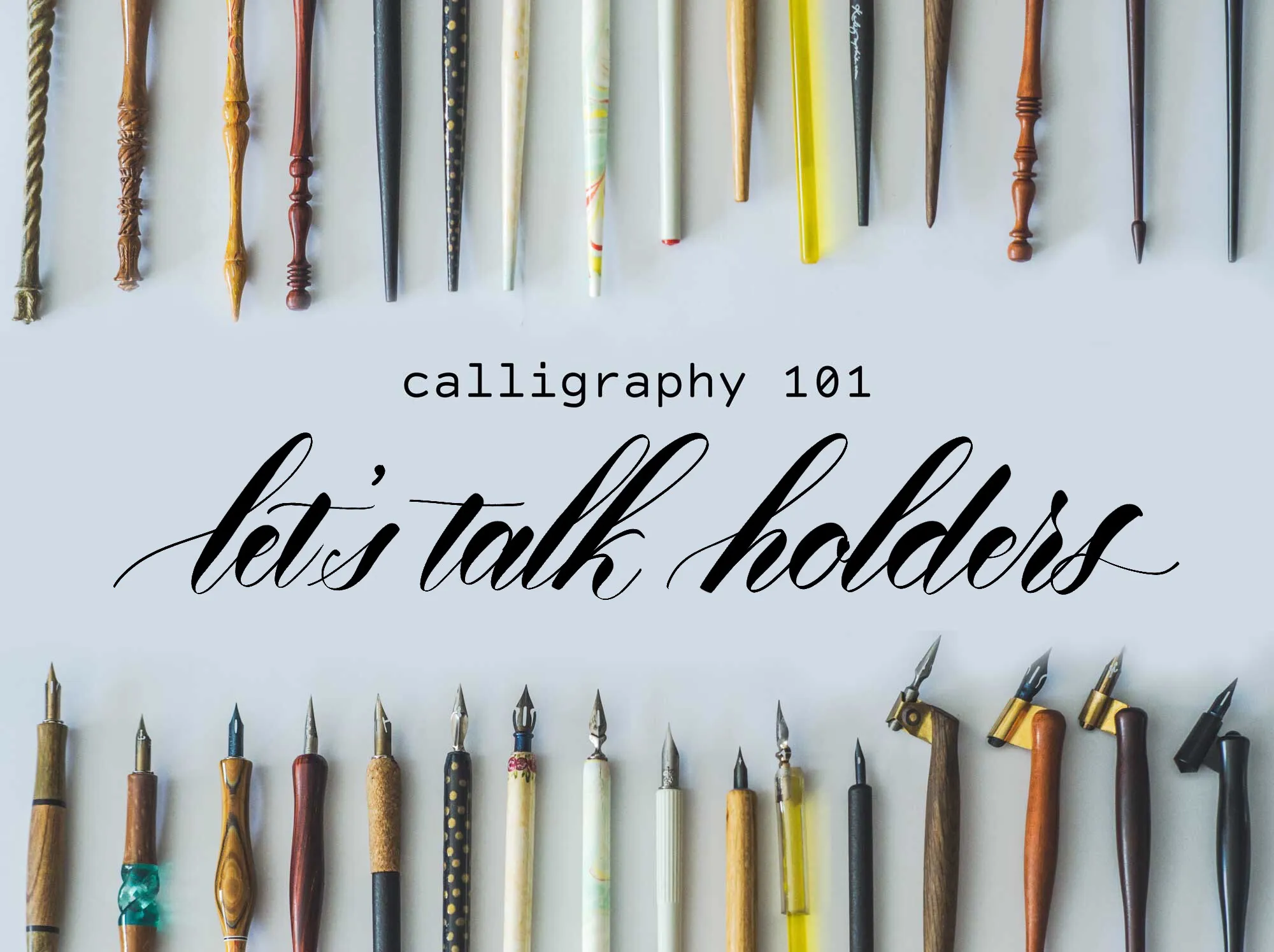
Table of Contents
Table of ContentsStraight Holders
Straight HoldersWe’ll start with the holder type I am more familiar with, because it is my type of choice.
What’s a straight holder?
What’s a straight holder?There are two different types of holders, straight and oblique. If you are from around Europe you will find obliques rather strange at first, they are so foreign in the german speaking part of the world that we don’t even have a word for it. So straight is what we are more familiar with and straight is what you will find in art supply stores for sure. A straight holder is basically just a pen handle that has some kind of nib holding mechanism, most common holders are fitted with a nib ferrule, which is a metal ring with four prongs to hold the nibs. You insert the nib and the result is a combination that ends up looking a lot like a fountain pen.
When to use a straight holder
When to use a straight holderYou can do any writing with a straight holder, basically, here are the use cases where everyone would argue to use a straight holder.
Flat edge, blackletter, gothic, fraktur or whatever you call it. No one will do blackletter with an oblique holder. Because fraktur is upright. And that’s basically your answer
Use a straight holder whenever you are writing upright letters. Using an oblique to write non-slanted letters defies its purpose. That’s what straight holders are made for.
You can use straight holders to write slanted too. If you’ve seen me write Copperplate, you know I use a straight holder for it, it’s all a matter for how you hold it. A straight holder can be used across the board, it is best at writing upright, though.
Different nib holding mechanisms
Different nib holding mechanismsThere are different kinds of ways to fit a nib in a pen holder. As I mentioned before, the most common one is using a ferrule. I’m sure there will be additional mechanisms, but following are the ones I know and have tried.
Ferrule
Ferrule
I’ve used one of these for the first time in fourth grade, so I already knew how to use it, when I got into calligraphy. It never occured to me, that some people thought you might have to insert the nib in the center of the holder. But we’ll talk about that in a minute.
This ferrule basically acts like a clamp. and holds most different nibs. Because the prongs can be bent, it is able to accomodate even some weirdly curved nibs.
Since it is metal, it is prone to rusting if you are not careful and the prongs can be bent. I have some pretty bad looking ferrules, but most of them still do their job. However many manufacturers don’t glue their ferrules into the holder, so it can be replaced in case you break it.
In the picture you see a straight plastic Caran d’Ache holder, I can get everywhere since Caran d’Ache is a swiss brand (not particularly fond of it, which is why the ferrule looked most photographable). You’ll also see this mechanism on the straight marbled holders you find everywhere. I can get a “naked” version of those wood pens in my local store and have painted some of them with acryllic paints and added some acryllic based wood laquer over the top. Most of my holders are fitted with ferrules and they hold basically every nib possible.
Ring Groove
Ring Groove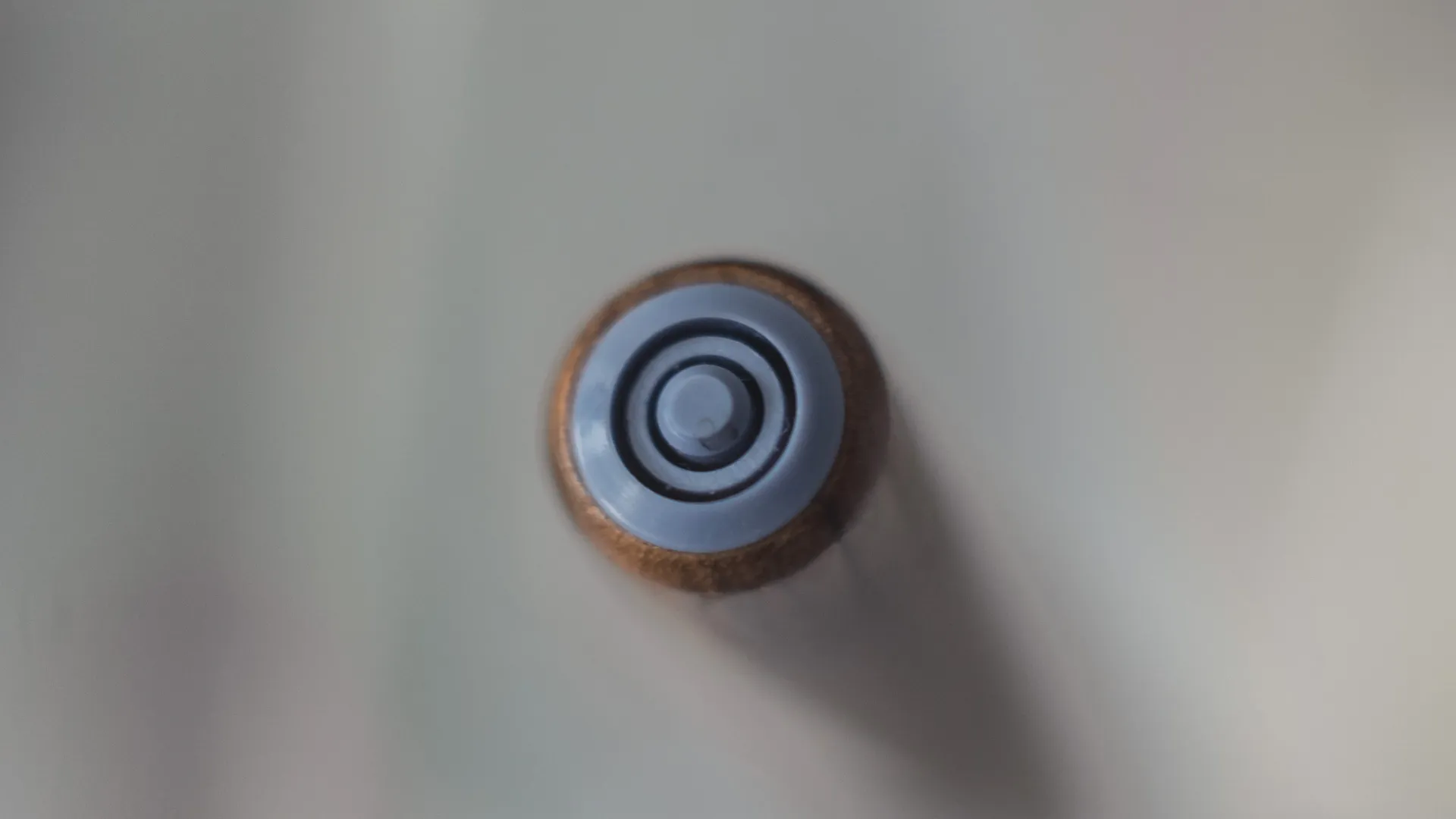
I first saw this mechanism in Tachikawa straight holders, I think the straight speedball has this too, if I’m not mistaken (not sure though, I don’t own that). The Tachikawa holders have two of those ring grooves, for standard nibs and crowquill nibs. If you check the blog post of my nib collection you will see that most of my nibs fit in a holder like this, but not all of them.
Because it is made of plastic, you might think it is basically unbreakable. Let me tell you: it is not.
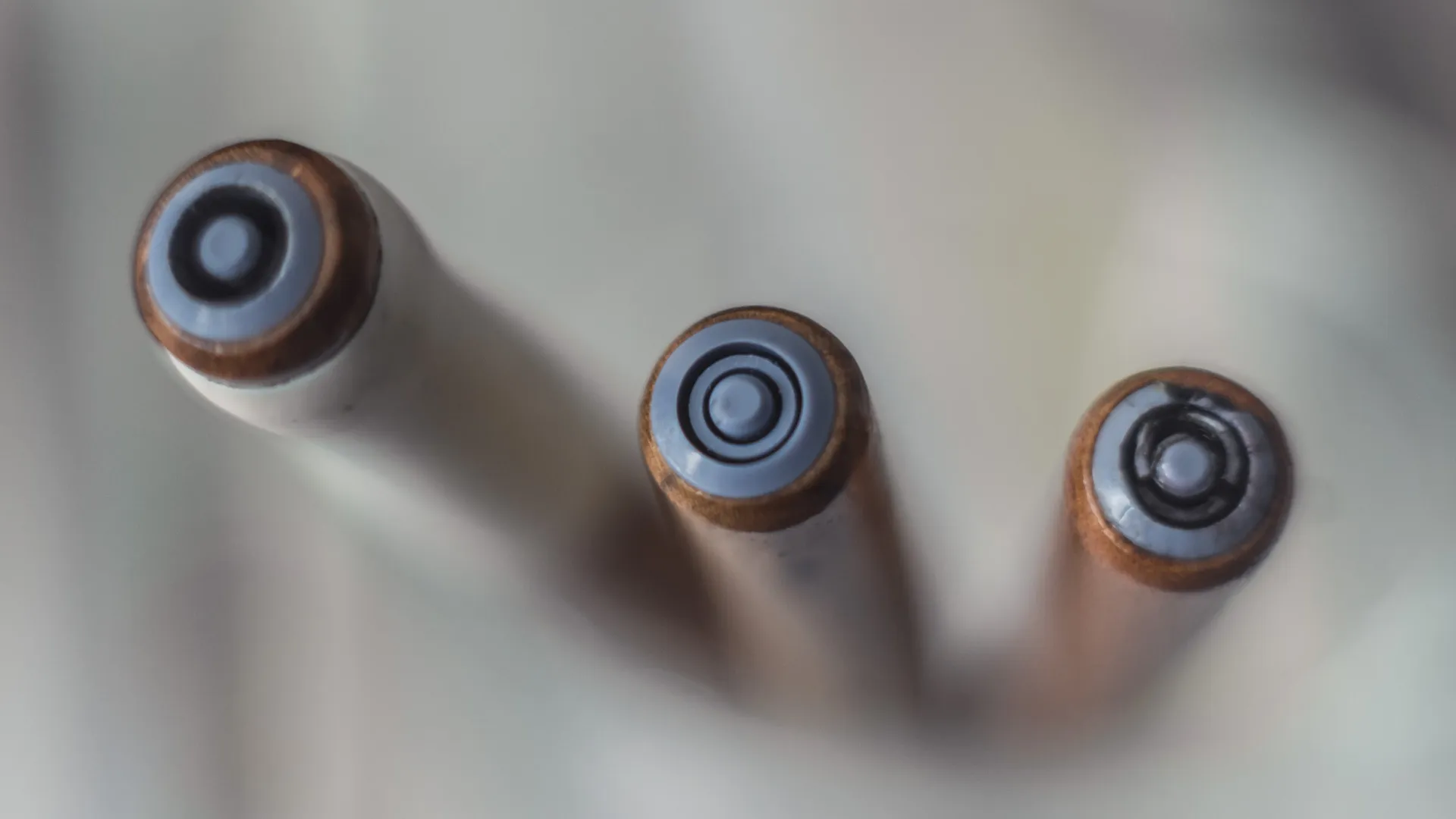
I broke my first one by melting it with acetone. That was totally user error though. I clean my nibs with rubbing alcohol and keep that in a dropper bottle, the same kind I use to hold acetone to clean my nail art brushes from nail polish residue. I mixed the bottles up and some of the acetone dripped into the holder. Misfigured, but it still holds some nibs.
The second of my tachikawas got probably ruined because I tried fitting too many unfitting nibs in there. The outer ring kind of loosened and at some point the center fell out. That one no longer works, and was only kept for demonstration purposes.
Hole
Hole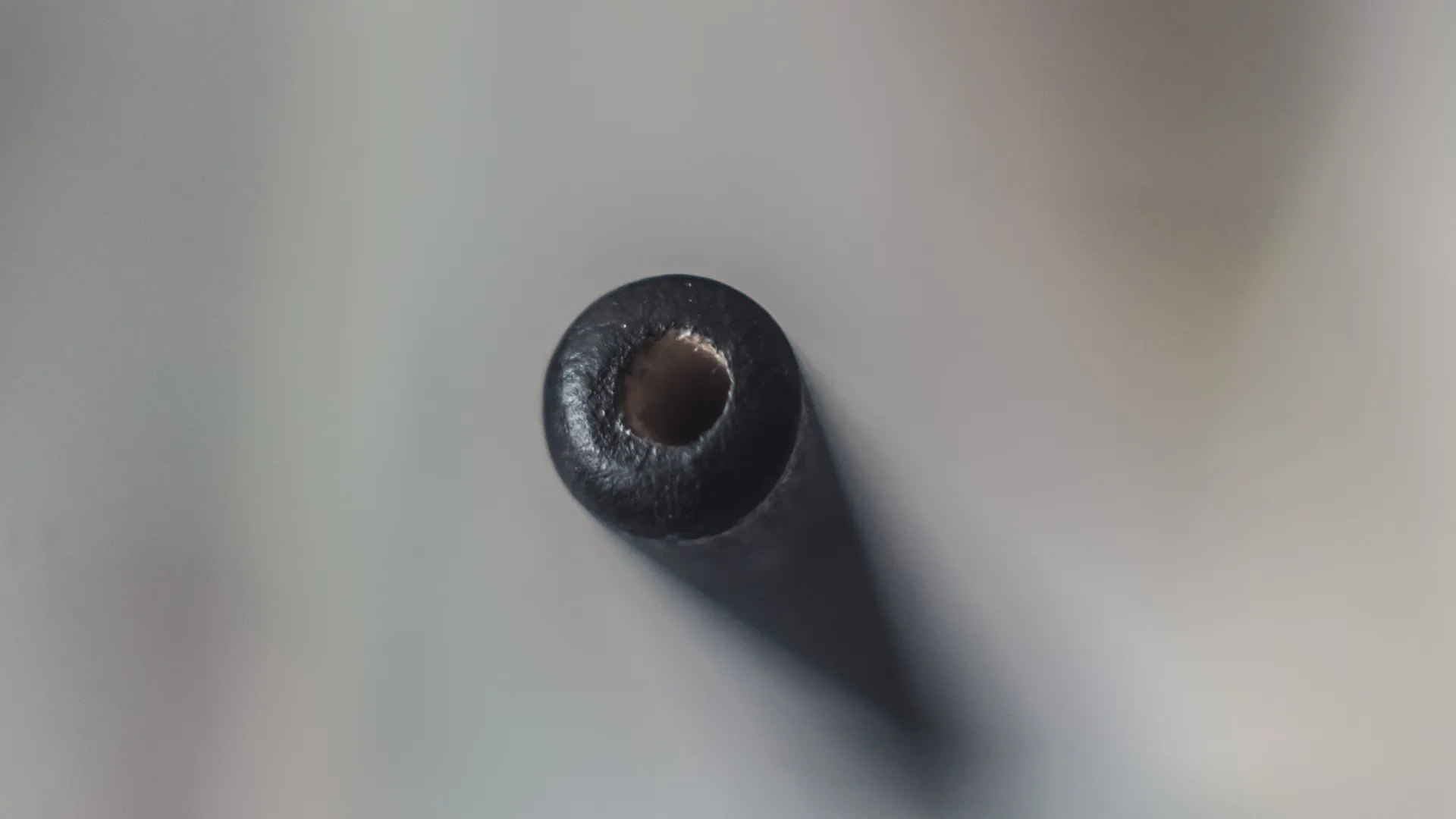
This is common for crow quill holders, so holders that are made for small tiny nibs. They basically just have a hole drilled into a stick and you fit it in there.
Simple, effective. I have not broken one of these yet.
”Wood Ferrule”
”Wood Ferrule”
I only know this one holder (which is one of my favorites ever) that has this wooden version of a ferrule. It is absolutely fantastic. There is no metal involved and no plastic. This wodden mechanism can hold every single one of my nibs, and it is super sturdy. I’d have this on every pen if I could.
This weird thing
This weird thing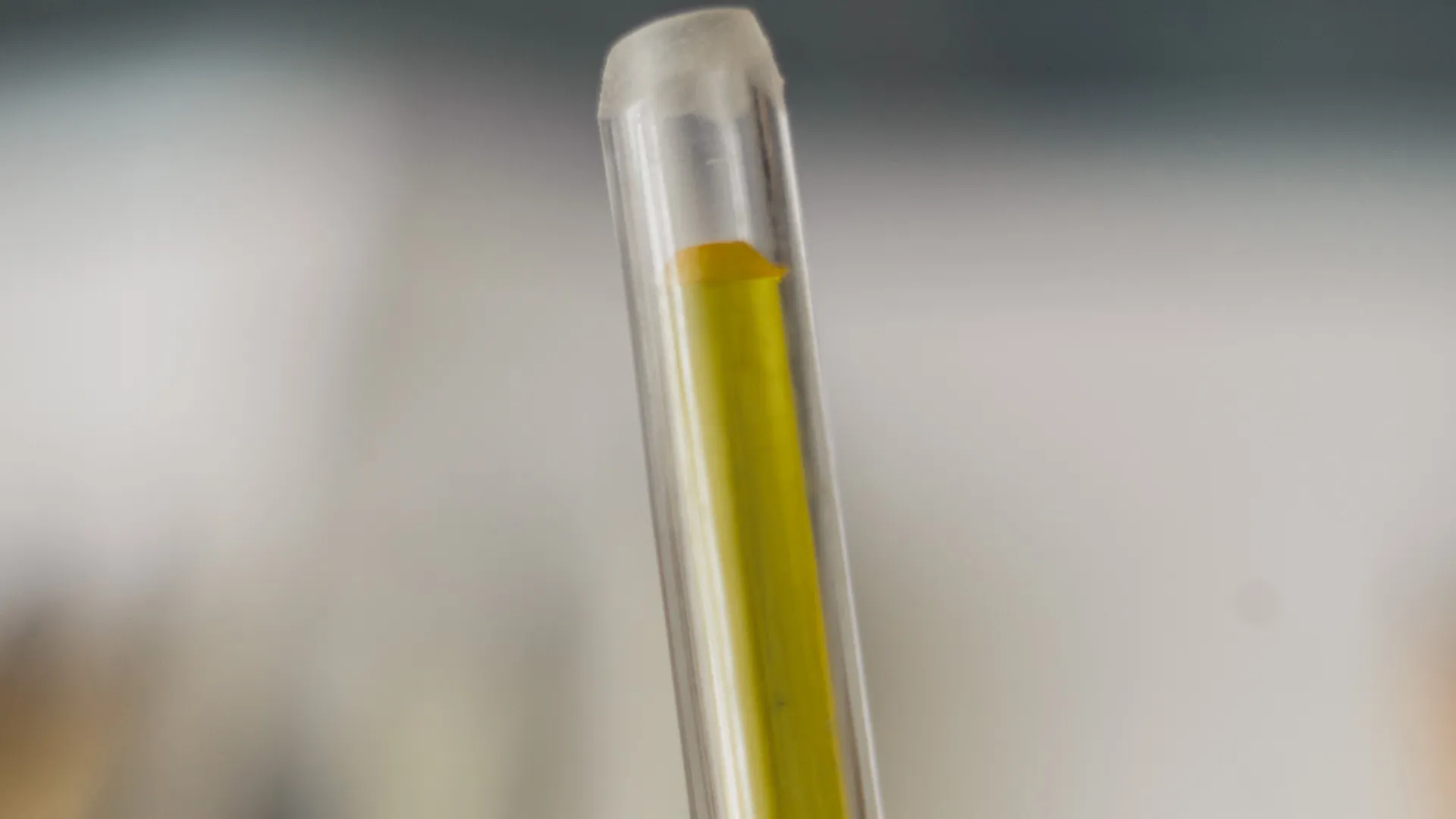
Okay, I ordered this holder just because I had no idea how to use it. and I wanted to know if I could figure it out. This holder is pretty uncomfortable in my opinion, but it’s kind of a novelty so I had to have it and check it out. I’ve never actually reached for it to use it, but it’s kinda fun to look at.
It consists of a plastic stick and a more flexible plastic tube, that slips onto the stick.
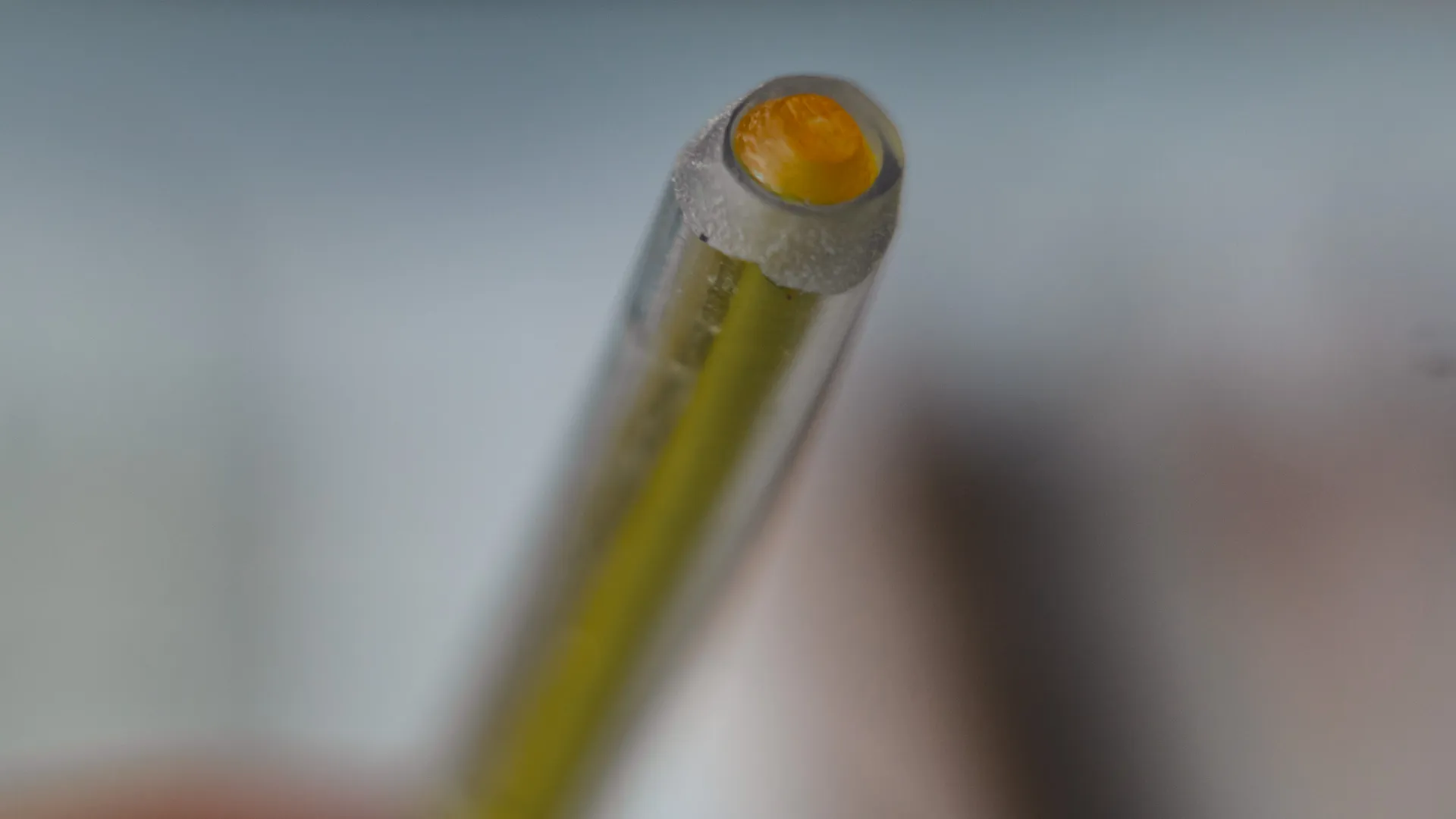
How to insert a nib
How to insert a nibI kinda touched on it, but I just wanted to specifically tell you how to fit nibs into each and every one of these holder types, since finding out that people have stuck nibs in the center of ferrules before, so it might actually be not as straightforward as I thought it was.
ferrule
ferrule
By now you know the nib is not inserted in the center. You actually want to push it into the outer ridge. When doing this for the first time, it might be quite hard to do. So make sure to protect your fingers from the nibs edges, I have cut my finger before because I was gripping the nib to tightly when pushing it in.
At first you might think the nib will never fit, but at one point you’ll get it and hear this clipping (is that a word?) sound and then it’s in there.
Ferrules soften with time, so only the first few times are a pain, then it’s a lot easier to fit the nib in.
Make sure not to get water or ink in your ferrule, if you do, take the nib out immediately, otherwise they might rust or dry together and good luck getting the nib out in one piece then.
Groove
Groove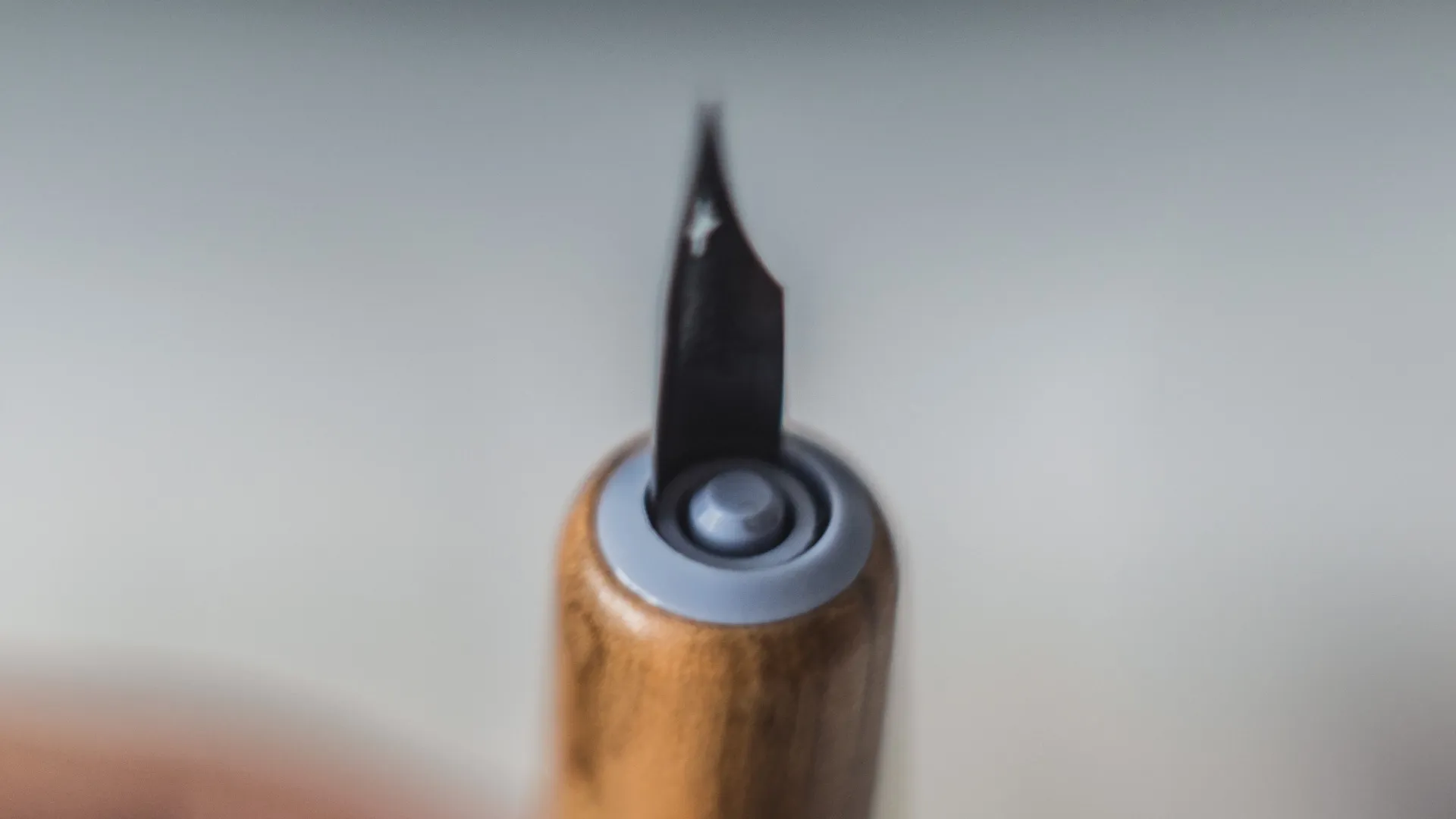
Grooves are a lot easier. Check the curvature of your nib and choose the right ring. Most nibs will fit in the outer ring, even the hunt 103 which is a tiny nib, will hold better in the outer ring.
The fit is not as snug as with the ferrule, which is why it doesn’t accept as many nibs, but it is definitely less intimidating at first.
Hole
Hole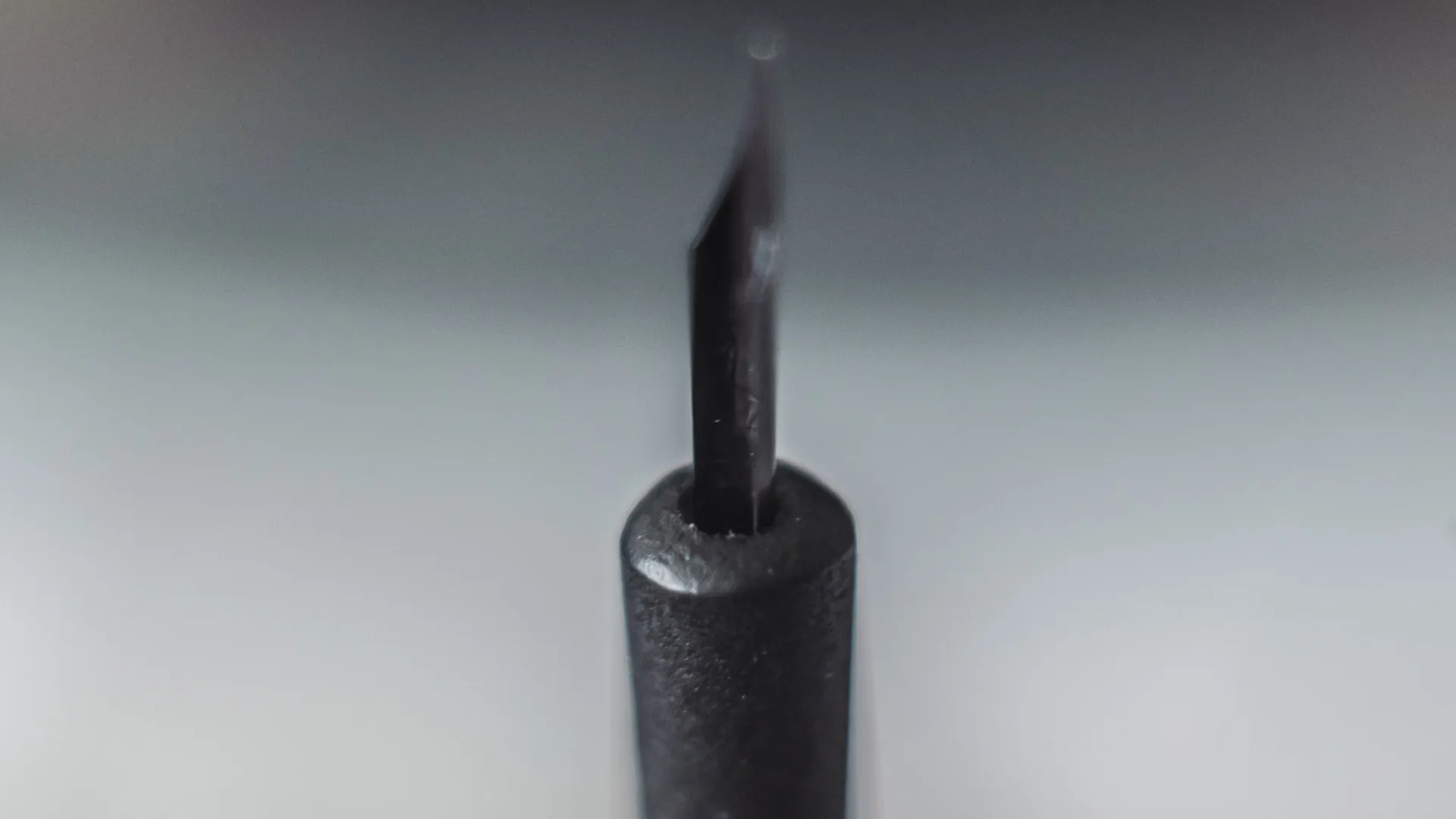
Aim for the center, when you push your nib in and then just apply some force. The hole is smaller than the curve of your nib, so this will also take a bit more hand grease than the groove. Again, protect your fingers with a tissue or my secret weapon I’ll talk about towards the end of this post.
Wood Ferrule
Wood Ferrule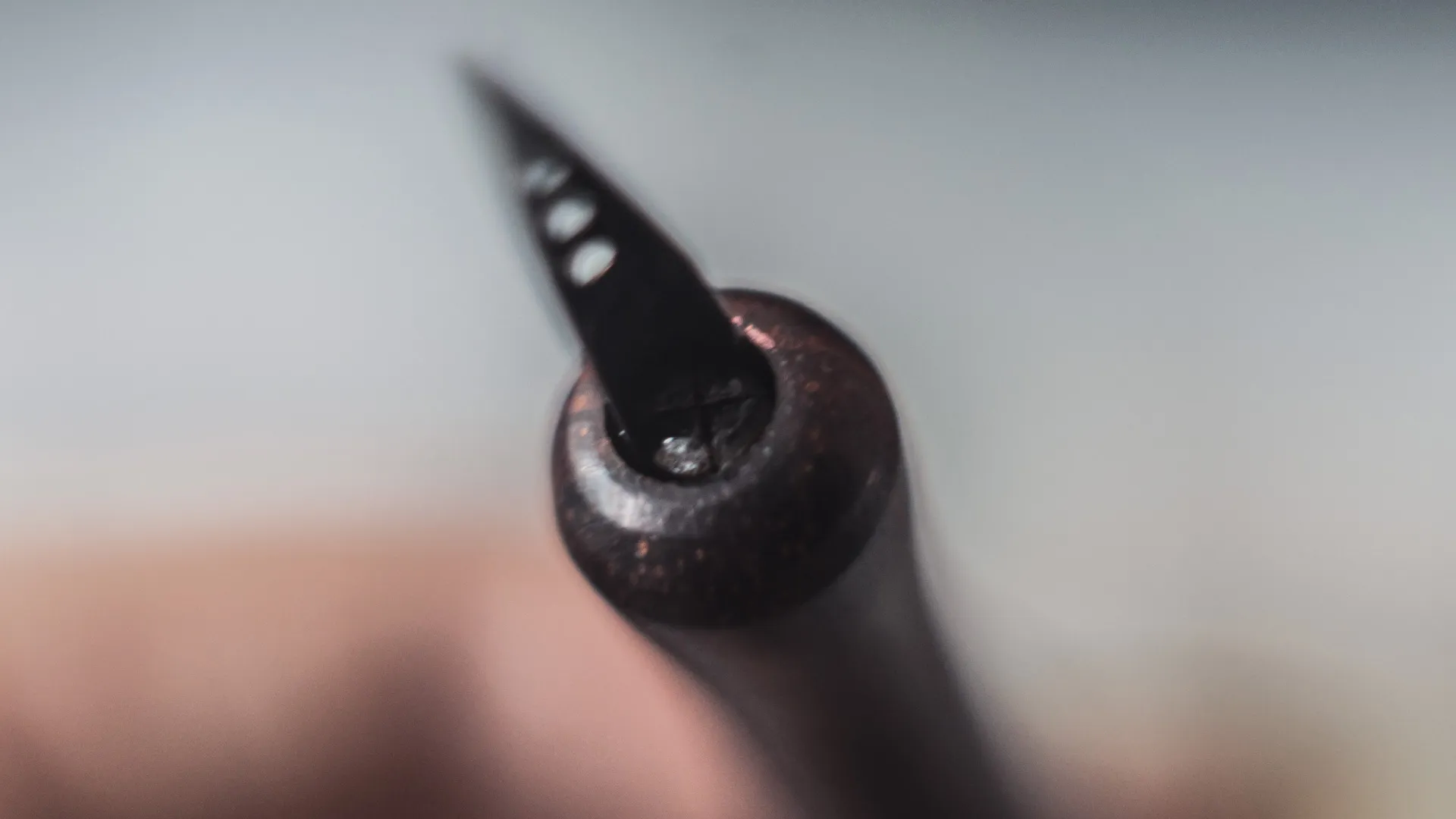
This one is like an in-between of the ferrule and groove, so again, place your nib in the outer ridge, it holds more securely, so a bit more pressure is required, but it will not be as hard as a ferrule.
Weird Plastic Thing
Weird Plastic Thing
I was actually having trouble with this at first. I thought that maybe because the outer plastic slides arount you aligned the nib with the stick and pushed the plastic up, but it’s acutally a lot easier if you align plastic sleeve and stick and then push the nib in between. With force. And I mean as much force at using a ferrule for the first time.
How to write with a straight holder
How to write with a straight holderI’ve given some people an introduction into calligraphy and most people naturally use it like they hold a pen. I’ve recently started to pay a little more attention to this and was quite surprised how some people could look at a nib and attempt to use it from the side.
So I asked them how they hold a fountain pen.
I’m from Switzerland, and we are lucky enough to have quite a fountain pen culture, so we all get a fountain pen in second grade. I got my first one at age 6 because I wanted one in first grade already. I’ve always been drawn to them.
Well, obviously you have to hold a fountain pen so that the nib faces down but for me it was kind of a given to write from below.
Some people don’t do that. Actually most of the people I asked write from the side.
This is not how you hold a dip pen.
When using a dip pen, you always want to hold your nib in the axis of your letters. And you always want to drag your nib downwards. Thus you want to hold your hand below the letters, not to the side. This makes it quite hard for certain lefties. In case you are not an underwriter, you might run into some trouble using a dip pen.
If you want to learn how to hold a straight holder for Copperplate I strongly recommend checking out Paul Antonios Video series (Posture, Placement & Position). He was the first person to tell me how important posture is for calligraphy, because I never even considered that that might have an impact. I am really bad at posture, so I keep going back to the video and really try to pay attention to this. I think this video series really outlines the importance of being aware of your whole body while writing, and not just think about your hand.
Most of the tips in the video also apply to oblique holders, so I recommend checking those videos out even if you want to do Copperplate with an oblique.
But obvisously, Paul being Paul, he’ll show you how to hold a straight holder, for Copperplate, which is also the way he teaches it in classes, and the way most european calligraphers and scribes will still write. Because Obliques are american, and a lot of people around here will not be aware of them, until they turn to the internet.
Oblique Holders
Oblique HoldersGood, let’s talk about the thing everybody loves and everyone is fascinated with, when they first learn about that magical looking writing instrument.
What’s an oblique?
What’s an oblique?Oblique holder has its purpose already written in its name. Oblique, Italic, Slanted, all of those words describe Letters that are not standing upright, but bent on an angle usually bent forwards.
The oblique holder was developed way later than the straight holder. It is an american invention which is why it is a lot easier to find in the US and that’s why we europeans usually have to order these overseas.
Obliques have a flange that sticks the nib out and holds it at an angle, which makes it easier to write slanted. Slanted being the key word here. So please read on.
When to use an oblique holder
When to use an oblique holderThis is a very very important point I want to make, because I see obliques being depurposed everywhere. I am not saying that obliques are bad. I really liked them when I first got them, because I was horrible at writing slanted.
But then I personally decided I preferred my modern calligraphy upright, which a lot of people end up doing.
So I switched to a straight holder for that, many people around instagram don’t.
As mentioned before, writing calligraphy demands the nib to be held at the same angle as the letters you are writing. If you are using an oblique to write upright letters you’ll have to adjust your wrist. The oblique holder was invented to make writing slanted easier, not to make writing upright harder.
So we take away: Oblique Holders for slanted writing only.
Different Flange Types
Different Flange TypesThere are different flange types. Classic flanges, Bullock flanges and different inventions that I compile as universal holders.
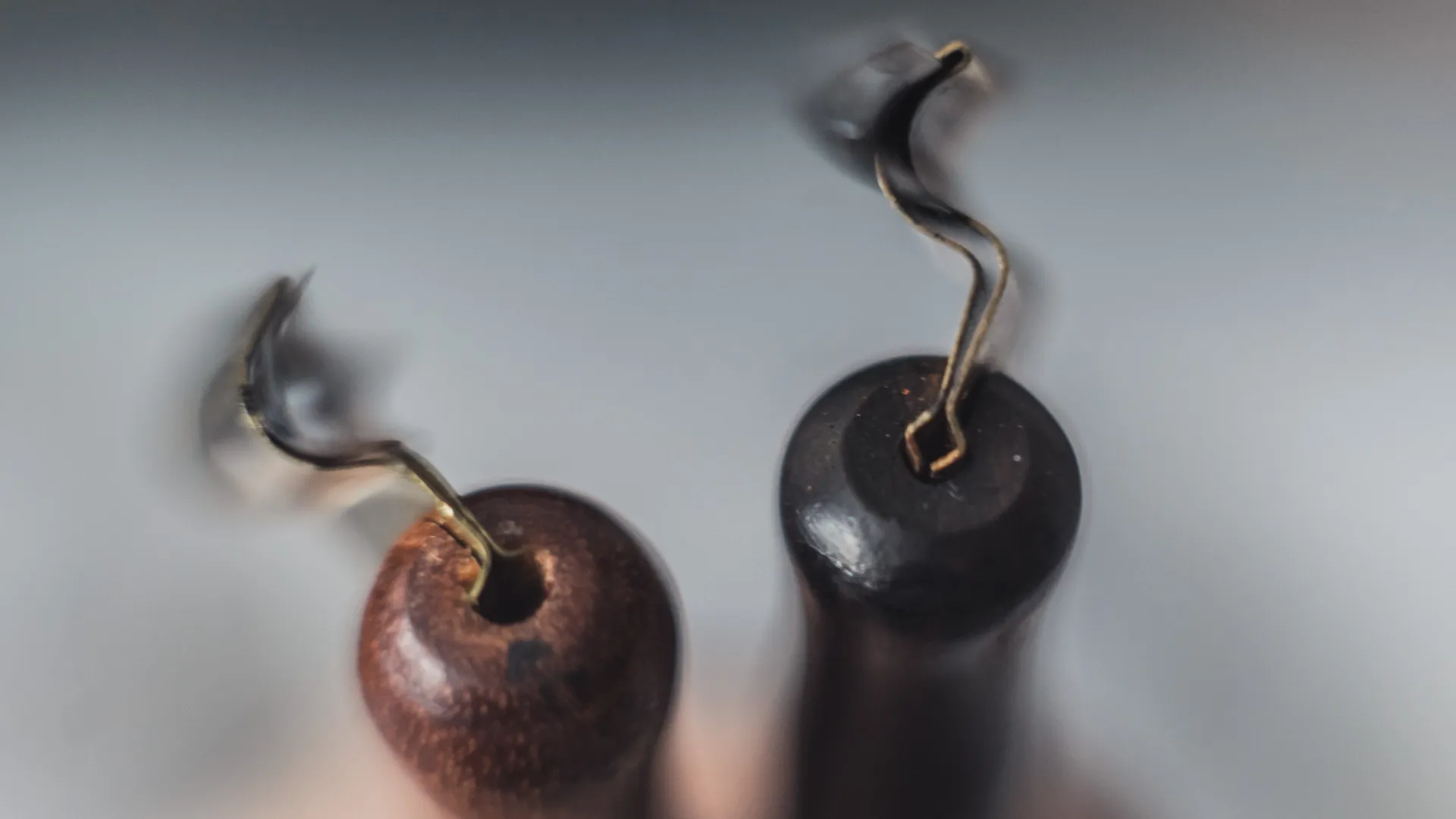
A classic flange is a curved piece of metal (brass), where you stick the nib in. A Bullock flange looks the same but features more than one slit, this means that you can fit many different nib sizes in it, without having to change the cuve of your flange.
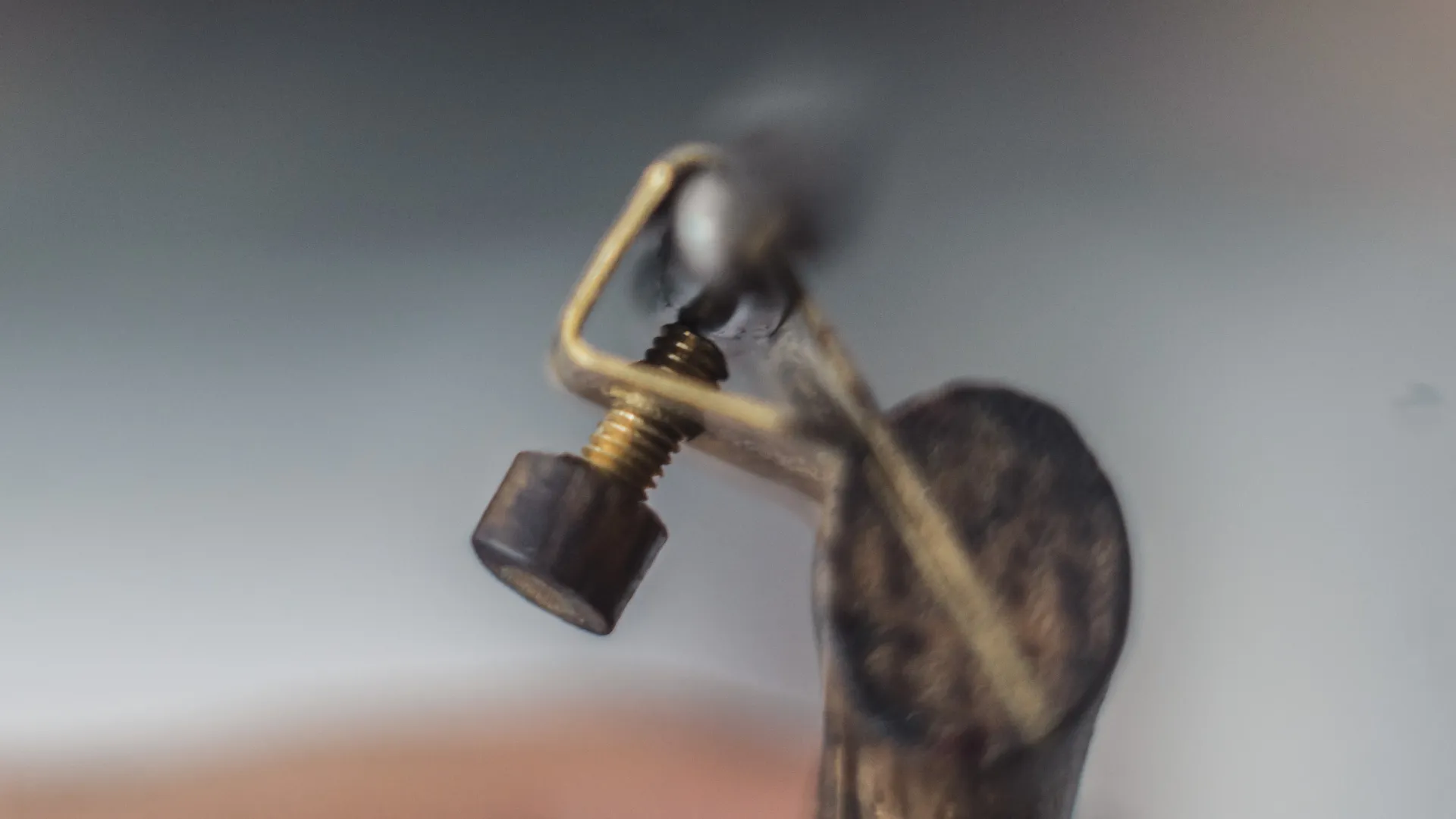
There are many different universal holders, I have one I got on etsy from Russia, that I really like.
There is also the speedball Oblique, which is basically a category of it’s own, we’ll deal with that later.
I personally have never gotten a bullock flange, so I can’t show you how to insert a nib, but I’ll link you a video below.
How to insert a nib
How to insert a nibThe way your nib is fitted into the holder is much more important with an oblique holder because you want the nib tip to be aligned with the center of the pen staf.
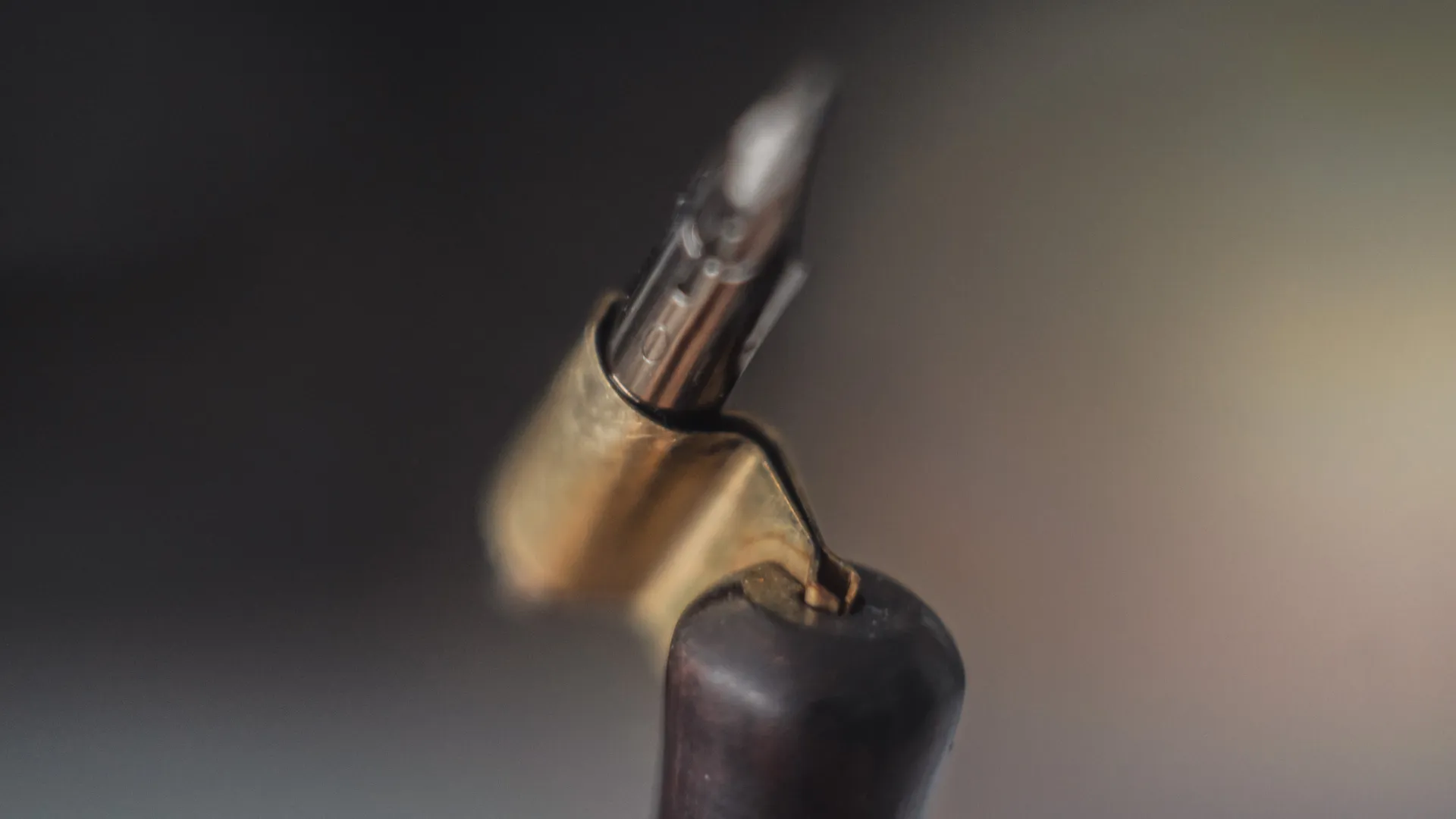
Flanges are a lot less confusing on how to insert nibs, you just shove them in there.

In case of my universal holder you just use a little screw to hold it in place, but getting the nib in there isn’t really a hard thing.
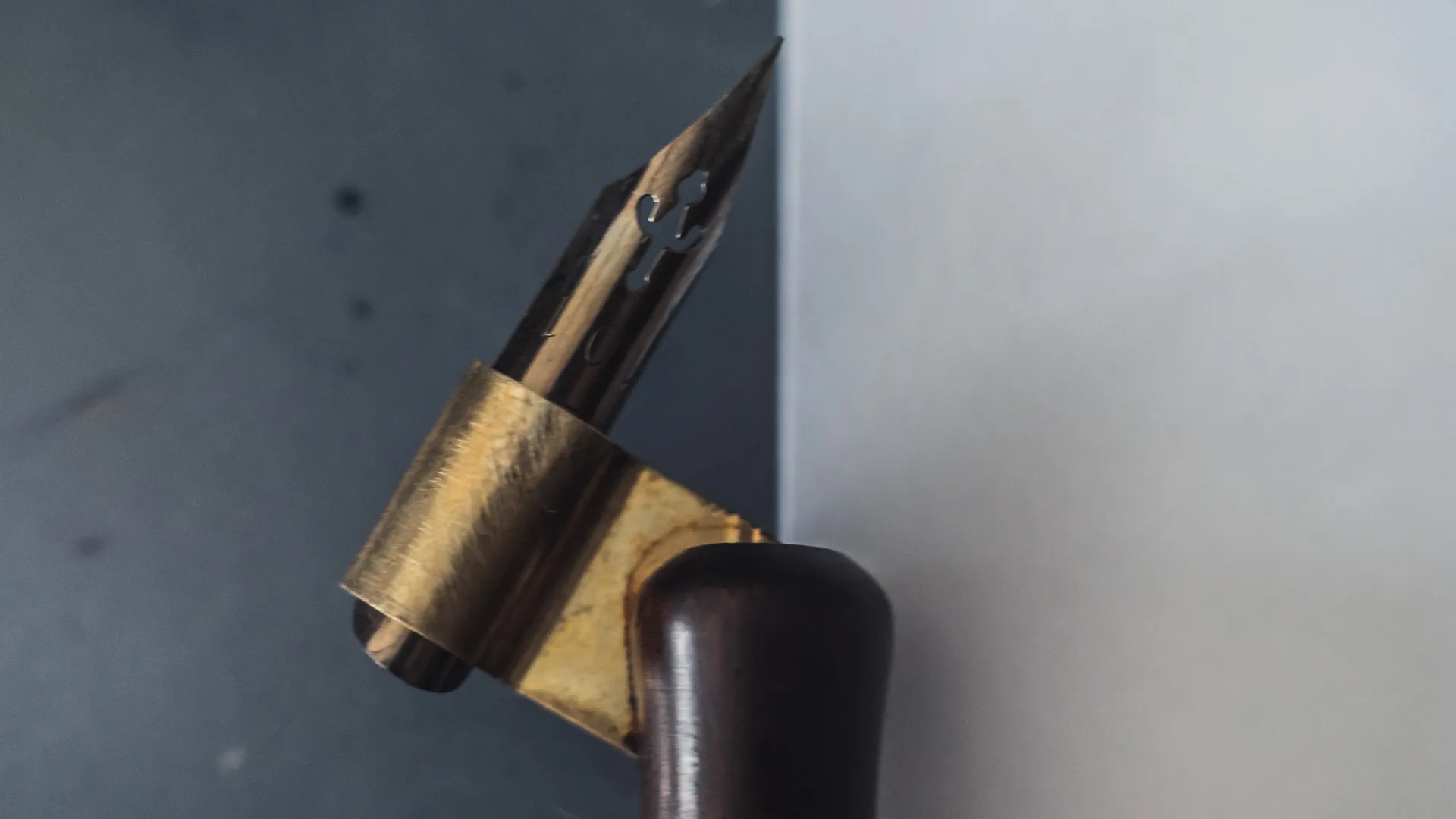
Aligning is a little harder and adjusting obliques is another thing.
I made this little video that shows you the alignment. Then a few links to Videos from Chris Yoke (who is one of the true masters when it comes to pen making and knows all of pen holder history) on bullock flanges, and adjusting flanges.
- Video: Using a Bullock flange
- Video: Adjusting a Flange for another nib
How to write with an oblique holder
How to write with an oblique holderKei Haniya has a video on how to hold and write with an oblique pen I really liked, so I’ll just leave you that to check out. Video How to Hold an Oblique Holder I think this explains it better than me writing a bunch of paragraphs on it.
Let’s talk money
Let’s talk moneyI have kind of touched on this in my intro. There is a big price difference with pen holders, so let’s talk a bit about that.
Price Classes
Price ClassesThere are a different price classes for pens. Obviously ranging from super inexpensive to true masterpieces, that cost a small fortune.
As with fountain pens and many other categories there is this curve that would correspond to what you get for your money. So if you go up a little bit with your budget say from
You might think
I’d say it depends on your hands. If you have problemes with your fingers (arthritis for example) or a very special grip and you’ll need something that is suited for your hand specifically, you might have to go as high as 50 dollars for the optimal writing experience, because you’ll have to get a custom pen that is fitted to your hand, just cheapest material and all. But if you don’t have a weird grip or anything, you’ll probably be able to find a mass-produced pen that works for you.
I would say if you spend 20 to 30 dollars on your holder you will get something that is of quite good quality and something that is comfortable for most people.
I personally wouldn’t call my pen grip weird and I’ve not struggled with cramps or anything. I quite like thin pens, so a “default straight holder” for two dollars will totally work for me personally. Of course my more premium holders are gorgeous and they have a little more weight to them, which I personally quite like. Also because they have more of a curvy shape to them, they lie better in your hand, but going with somehting like a Turn of the century holder from Paper and Ink Arts will do that too.
So why would you spend more than 100 dollars on a pen?
mass-produced vs. artisanal
mass-produced vs. artisanalI guess you can have this discussion on almost any subject. Here are some of the things I think about this whole custom pen thing.
I’ve gone over a year before I decided to invest in an expensive pen holder. I loved some of the work I saw, but I really could not bring myself to spend more than 40 dollars on a pen for the simple reason, that my holders worked for me. They were comfortable, had a weight I liked. They were not ugly, after I handpainted some of my two dollar holders and the 20 dollar ones from paper and ink arts totally did their jobs.
But at one point my relationship to Calligrpahy changed. If you’ve been following me on Instagram, you might have really seen that moment. At one point I would just take the nibs whenever I wanted to do lettering. At one point I was ready to do practice. I was ready to fill a page just with letters. I think it was that point where I really fell in love with it. I fell in love with it more than I’ve fallen in love with Brush Pens or brushes or fude pens. I think I have fallen in love more with dip pens than with fountain pens and fountain pens and I go waaaay back.
I reached a point where I had been using my pen holders multiple times a day for months in a row. It’s the same thing with everything for me. When I really really use something, I am ready to spend a little more on it, because I know I will use it every day, I’ll appreciate it for a long time.
So that’s when I decided to start getting more into artisanal holders. It was also around that time that I seriously started buying nibs like crazy, but we’ll leave that out for the moment.
I also think that pretty pen holders are truly pieces of art. There is so much care put into each handmade pen. Especially custom orders mean that you truly get a piece made for you. Something that’s unique and something that suits your personality somehow. And I really like the fact that you get to know the person behind the product you’re getting. Usually ordering a pen piece like that comes with conversations with the makers, you know where your money goes and usually you are truly funding passion, which I think is a great thing to invest in.
Pen Makers on Myriam’s Wishlist
Pen Makers on Myriam’s WishlistSo I just wanted to put together this small collection of amazing pen makers I’m following, I’d love to have at least one of each of these people, but since I’m only on a student with part-time work budget it might take a while to get through this list. I’m still gonna put it together here, in case you are interested in getting a gorgeous pen yourself.
Pens I already have
Pens I already haveJust a quick shoutout to the makers and pens I already own
1. Miles Calligraphy
1. Miles CalligraphyI got this pen at Selim’s Etsy store, it was not a custom order, but it was an instant love story. This holder is made from a vintage french kind of plastic from the 1920s. The material feels incredible, the shape and weight are perfectly balanced and I love the colors.
He also does some more ornate pens which have decorative pieces to them, which are absolutely gorgeous. I’m definitely keeping Selim on my list for a true custom piece in the future, I have ideas running around.
2. Kalemkes
2. KalemkesAli is incredible! I’ve instantly fallen in love with his work when I first found it and ordered my pen the same day, which turned into two pens that are absolutely gorgeous.
The darker of the two is made from Kuka, which is a type of nut similar to coconut I believe and the center twist is acryllic. The second pen is made from Rosewood and Sandalwood. Woods will oxidize and change when they are untreated. Ali asked me for colors I liked and when I told him dark mossy green he showed me a piece of oxidized rosewood which had turned into this really cool dark green. So the second pen was left unfinished so it can develop some of that color and change with time (and has done beautifully, as you can see in more recent posts on Instagram) I guess it’s the same thing as with metal pens. Some people go and polish them up, others deliberately touch Copper Pens with their hands so a nice patina forms. I’d do the patina thing, so obviously when I learned the same thing happens with woods, I wanted a pen like that.
Ali does not have a shop, everything he does are custom orders, so just contact him. Instagram
Wishlist
Wishlistin no particular order, they are all amazing
- Yokepencompany
Okay, this one first because I am currently in the ordering process for a custom piece. Chris was the first penmaker I ever followed on Instagram and he does truly spectacular work. He knows so much about the history of pens and does amazing replicas of old historical holders. I love all he does.
Shop · Instagram - MP.Oblique
Gorgeous pens, I especially love the clear ones. Mostly obliques.
Etsy · Instagram - Ash Bush
Wooden Pens with beautiful handpainted designs on them.
Etsy · Instagram - InkMeThis
Fun acryllic obliques, I’m waiting for them to start making straight ones ;)
Shop · Instagram - Tomsstudio
Clean looking partial copper pens I love.
Shop · Instagram - Held Holders
Beautiful pens with handpainted floral illustrations.
Etsy · Website · Instagram - Huyhoangdao
Beautiful replicas and lovely painted accents.
Shop · Instagram - FC Penholders
Transparent holders, very limited quantity though.
Etsy · Instagram - Lindsey Hook
Handcarved ergonomic pens.
Shop · Instagram
Choosing the right holder
Choosing the right holderChoosing the right holder is a choice that no one can do for you. It really all boils down to personal preference. When using a pen holder you shouldn’t feel any kind of pain, so make sure you get a pen that’s made for your grip and make sure to inform yourself on how to use the pen properly, take care of your hand.
First Time using a nib
First Time using a nibWhen you are using a nib for the first time, I would recommend getting a straight and an oblique pen, so you can try out both and find out what you are more comfortable with. Only then can you really judge what your preference is.
Let’s talk about that Speedball Oblique
Let’s talk about that Speedball ObliqueOkay, I had actually done A LOT of research before I placed my first oblique holder order because I am a crazy researcher (which is why I always have those gigantic blogposts, because I like my stuff all in one place). I never ordered a speedball until I decided to write this blogpost, because I had read about the reasons why pen experts and makers hate it.
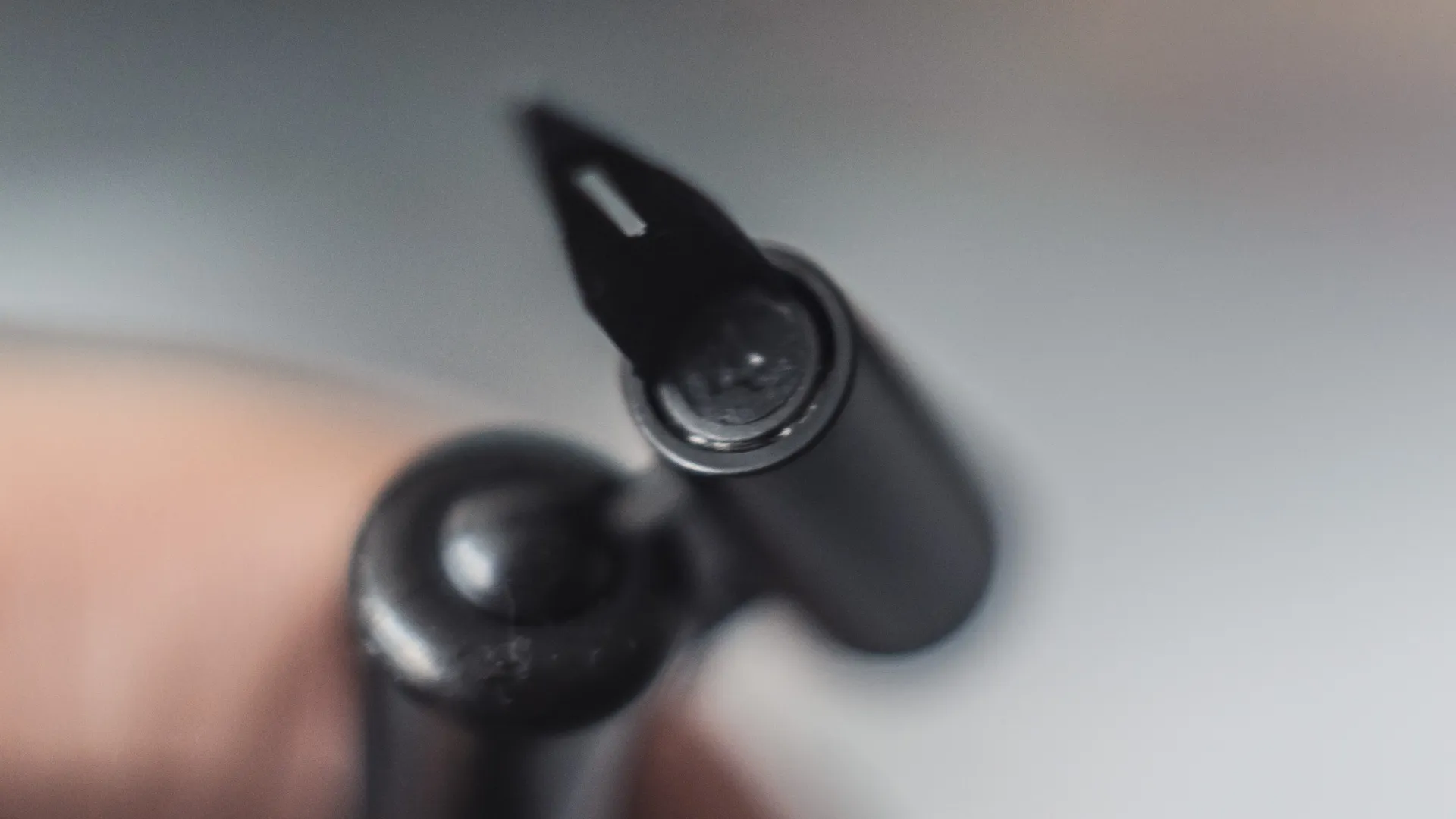
I never extensively used the speedball, but the times I tried using it with a G nib were a pain. As mentioned before, the nib in an oblique holder has to be placed in the flange so that it aligns with the center of the handle, which is obviously not possible if you use a speedball, because the “flange” is closed in the back, so you cannot align it properly with every nib.
G nibs are incredibly large and definitely cause a very big misalignment with the speedball, which then leads to you overcompensating with your hand, and twisting it to a point where your wrist ends up hurting after a longer period of time.
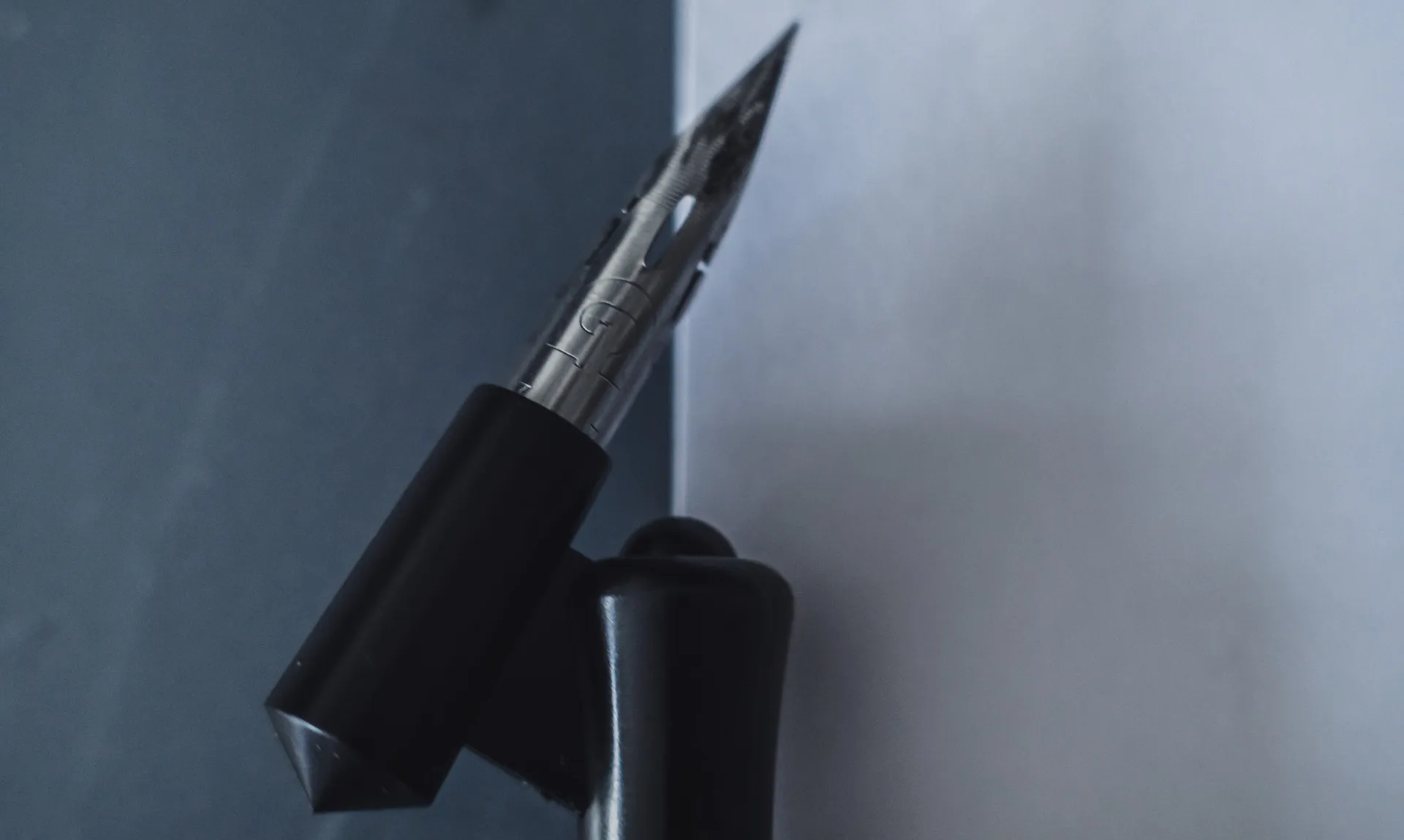
If this holder really is your only option, then go with a smaller nib. A nib like the Gillott 404 which is a nib of similar stiffness and feel to a G nib, actually does not align perfectly, but it is a huge improvement to the G nib in there.

Personal Recommendations
Personal RecommendationsOkay, first of all Chris Yoke has resently released an amazing two-in-one Oblique and Straight Holder. The Deuce I haven’t ordered one (yet) so I didn’t personally try it, but it is the cheapest metal flange oblique available and Chris definitely knows his geometry. So I would say this is probably your best option to try out both holders in one for a very low budget.
If you are willing to spend a little bit more, maybe after you decided which pen type you prefer, I absolutely love the straight turn of the century holder, it is the most comfortable mass-produced pen I own. I still use it almost every day (it is my pen for the “travelling nibs” my favorite nibs have permanent homes in my custom holders, the other ones are mostly used in this holder).
As for obliques I haven’t tried as many, but I just really like the Calligraphicashop Oblique Domique I got. The angle of the flange is not adjustable though, some people might not like it. Also it will be harder to use with smaller nibs, sometimes they will not line up with the center of the pen. But it works great with the standard ones and very large ones too.
I find the other flange holders quite hard to use with alfred type nibs, since they are very long and you have to push the nib really deep into the flange for that.
You don’t need a super fancy holder to do gorgeous calligraphy, just to make that point again. But a pen that makes you happy is a reason to pick it up more often. If a holder causes frustration practice is obviously not fun, so in a way a nice holder does help in getting better, in the way that it is part of the motivation to sit down and use it more often. Or at least that’s how it works for me.
Extra: My Secret Weapon
Extra: My Secret WeaponAnd if you seriously read all of that, thanks!
As I have mentioned in the inserting nib section, nibs are quite sharp and sometimes they like to get stuck.
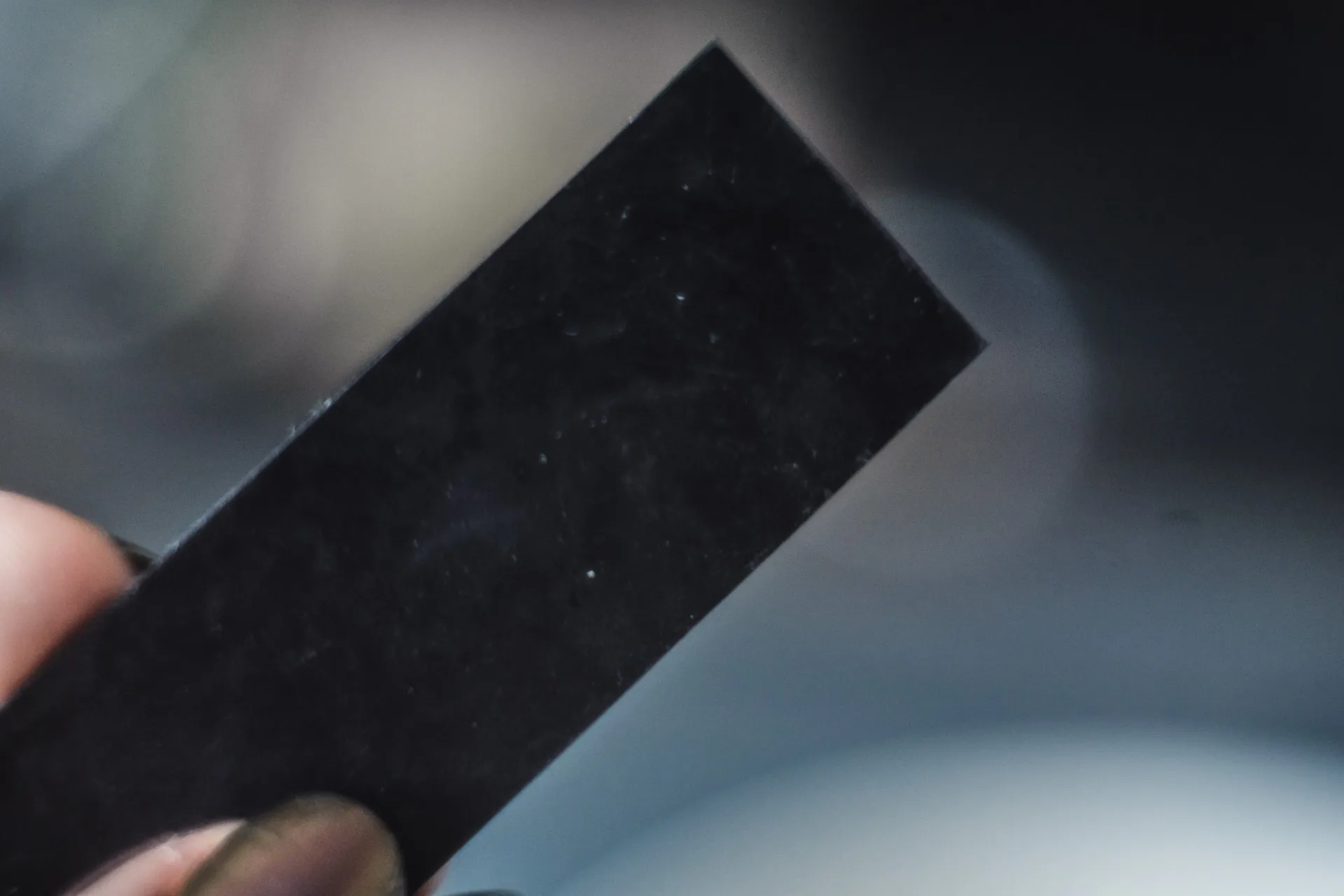
To minimize that kind of frustration I actually use a Goulet Grip. It is just a piece of rubber that adds some additional grip.
This little thing has saved me lots of cuts, frustration and actual nibs that I would’ve killed with some pliers if I didn’t have the grip. So if you ever order from goulet, definitely throw one of those in your cart, it’s fantastic!